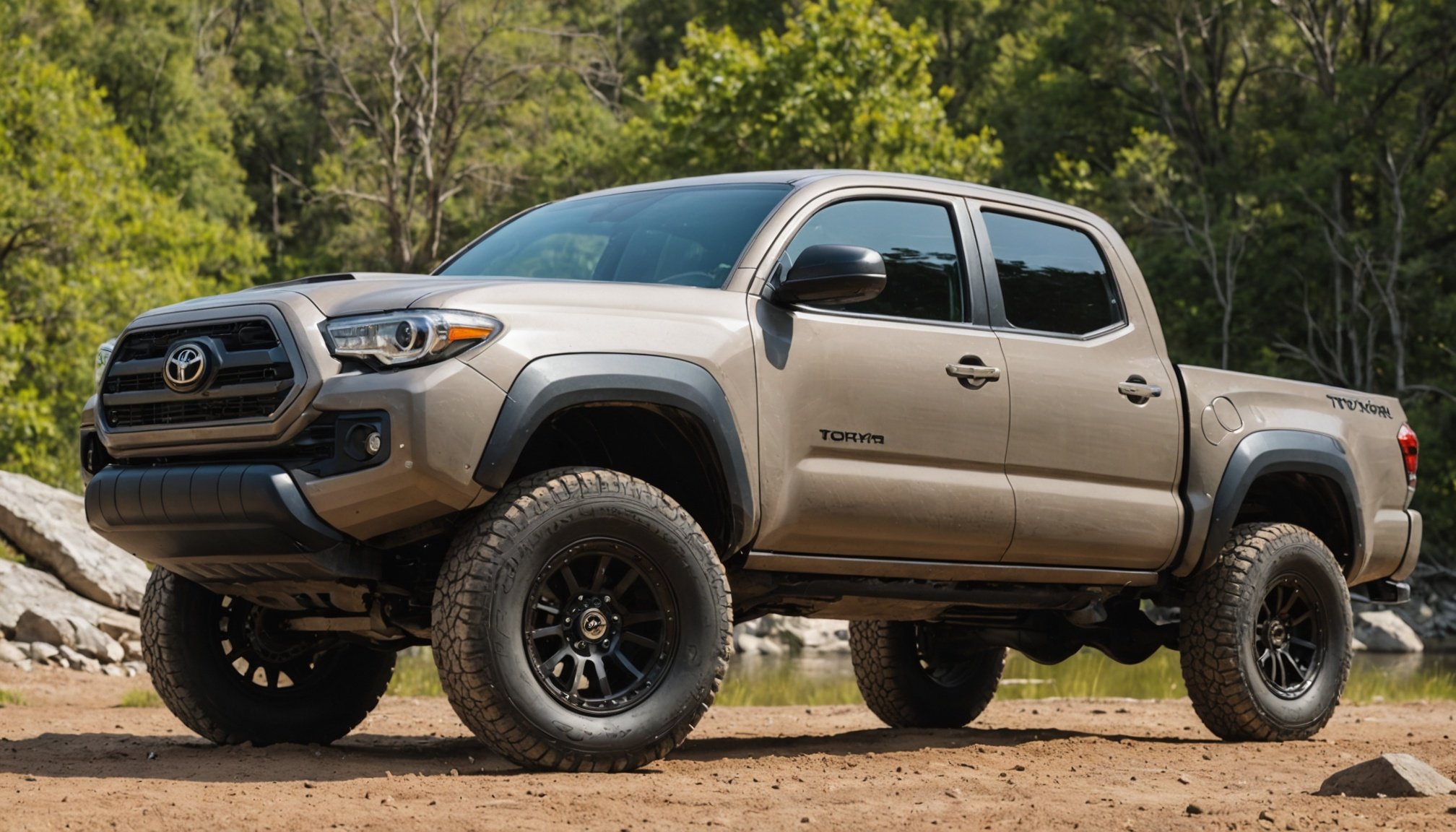Ultimate Guide to Choosing the Top Undercoating for Your Toyota Tacoma Against Rust in Coastal Environments
Understanding the Threat of Rust in Coastal Environments
If you own a Toyota Tacoma and live in a coastal area, you’re likely no stranger to the constant battle against rust. The combination of salt-laden air, moisture, and road salt can be a perfect storm for corrosion. Here’s why understanding this threat is crucial:
- Salt and Moisture: Coastal areas are notorious for high salt levels in the air and frequent moisture, which accelerate the rusting process. When salt and moisture come into contact with the metal components of your vehicle, they can initiate and exacerbate corrosion.
- Road Salt: During winter months, roads are often treated with salt to melt ice and snow. This salt can splash up onto your vehicle’s undercarriage, increasing the risk of rust.
- Corrosion Hotspots: Areas like the rocker panels, suspension components, and the vehicle undercarriage are particularly vulnerable to rust due to their exposure to road salt and moisture.
Why Undercoating is Essential
Undercoating is a critical step in protecting your Toyota Tacoma from the ravages of rust. Here’s why it’s so important:
Also to read : Transform Your Tesla Model X: Discover the Ultimate Guide to Boosting Interior Ambiance with LED Lighting
- Long-Term Protection: A good undercoating can provide long-term protection against rust, extending the lifespan of your vehicle.
- Preventive Maintenance: It’s much easier and cost-effective to prevent rust than to repair it after it has set in.
- Enhanced Resale Value: A well-maintained vehicle with a rust-free undercarriage can significantly boost its resale value.
Types of Undercoating Products
When it comes to choosing the right undercoating for your Toyota Tacoma, you have several options. Here are some of the most common types:
Fluid Film
- Description: Fluid Film is a lanolin-based coating that provides a thick, protective barrier against rust.
- Application: It can be applied using a spray gun or by brushing it onto the surfaces.
- Pros: Easy to apply, non-toxic, and environmentally friendly.
- Cons: May need to be reapplied periodically.
Waxoyl
- Description: Waxoyl is a wax-based undercoating that hardens to form a protective layer.
- Application: Typically applied using a spray gun.
- Pros: Provides a hard, durable coating that is resistant to road salt and moisture.
- Cons: Can be more difficult to apply than Fluid Film.
Dinitrol
- Description: Dinitrol is a multi-stage undercoating system that includes a rust conversion primer, a cavity wax, and a final protective coating.
- Application: Requires professional application or careful DIY execution.
- Pros: Offers comprehensive protection with multiple layers, highly effective against rust.
- Cons: More expensive and complex to apply compared to other options.
How to Choose the Right Undercoating
Choosing the right undercoating involves several factors, including the climate you live in, the condition of your vehicle, and your budget. Here are some key considerations:
Also read : Boost Your Hyundai Veloster Turbo”s Performance: Discover the Benefits of a Custom Exhaust System
Climate and Environment
- If you live in a highly corrosive environment, such as a coastal area with frequent rain and road salt, you may want to opt for a more robust undercoating like Dinitrol.
- In less severe environments, Fluid Film or Waxoyl might be sufficient.
Vehicle Condition
- If your vehicle already has some rust, you may need to start with a rust conversion primer before applying the undercoating.
- For new vehicles, a preventive undercoating can be applied to protect against future rust.
Budget
- Cost Comparison:
Undercoating Type Cost Range Fluid Film $50-$100 Waxoyl $70-$150 Dinitrol $200-$500 Professional vs. DIY
- While some undercoatings can be applied DIY, professional application often ensures a better job, especially for complex systems like Dinitrol.
- Here’s what a satisfied customer of Preserve and Protect, a professional undersealing service, had to say:
“I’m a bit lost for words, as to best describe the communication (in calls and pictures), courtesy, attention to detail and final results I cannot recommend these guys enough Absolutely top class result!”[1].
Step-by-Step Application Guide
If you decide to apply the undercoating yourself, here’s a step-by-step guide to help you through the process:
Preparation
- Clean the Undercarriage: Use a pressure washer and a wire brush to remove any dirt, grime, or existing rust.
- Dry the Area: Ensure the area is completely dry before applying the undercoating.
Application
- Apply Rust Conversion Primer (if necessary): If there is existing rust, apply a rust conversion primer to convert the rust into a stable surface.
- Apply Undercoating:
- For Fluid Film or Waxoyl, use a spray gun to apply the coating evenly.
- For Dinitrol, follow the multi-stage application process as instructed.
Post-Application
- Inspect and Touch Up: Inspect the undercarriage for any missed spots and touch up as necessary.
- Regular Maintenance: Check the undercoating periodically and reapply as needed.
Additional Tips for Rust Prevention
In addition to undercoating, here are some additional tips to help protect your Toyota Tacoma from rust:
Regular Washing
- Regularly wash your vehicle, especially the undercarriage, to remove salt and debris.
Use Rust-Proofing Products
- Use rust-proofing sprays or oils on exposed metal components.
- Here’s an example of how one user protected their roof rack:
“I applied some silicone around the screws and the rubber sleeves that go over the slip connection points for extra waterproofing. I then sprayed the entire thing with a thick coat of high endurance, rust-free enamel spray paint.”[2].
Check Drain Holes
- Ensure all drain holes in the undercarriage are clear to prevent water accumulation.
Protecting your Toyota Tacoma from rust in coastal environments is a critical aspect of vehicle maintenance. By understanding the types of undercoating available, choosing the right one for your needs, and following a thorough application process, you can significantly extend the life of your vehicle.
Here’s a final word from a satisfied customer who understood the importance of professional undersealing:
“If you’re thinking about getting this done, then absolutely do it. If you’re worried about your car rusting away, especially in the harsh Scottish winters, then look no further. Friendly passionate staff who seem intent on going the extra mile every step of the way.”[1].
By taking the time to apply the right undercoating and following these tips, you can ensure your Toyota Tacoma remains rust-free and in excellent condition for years to come.











